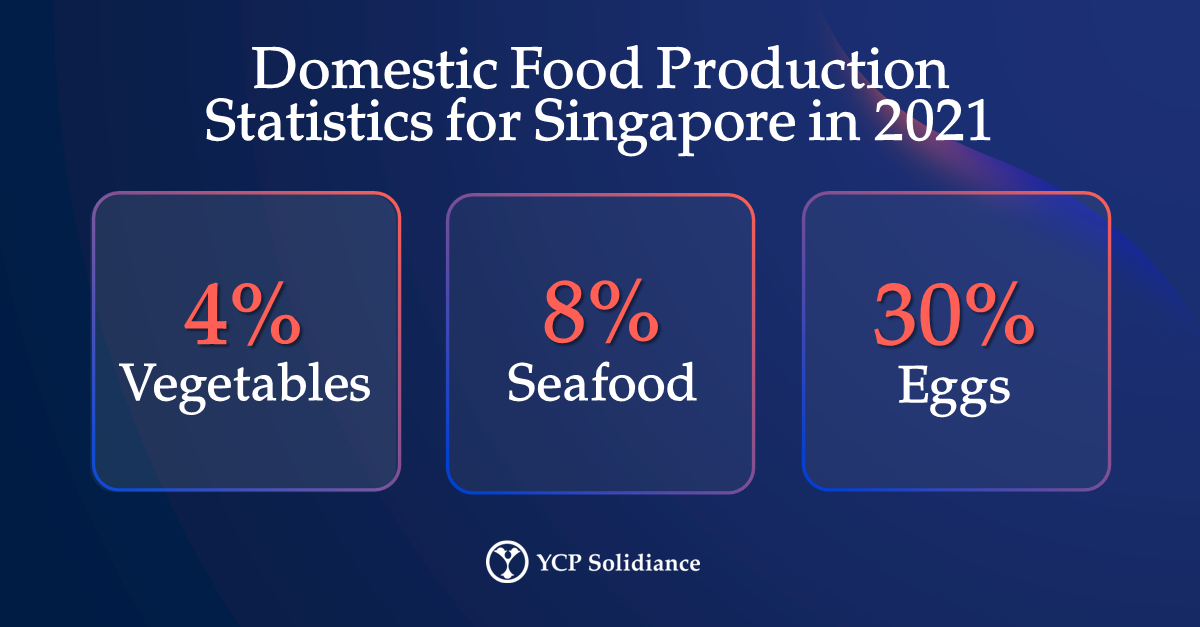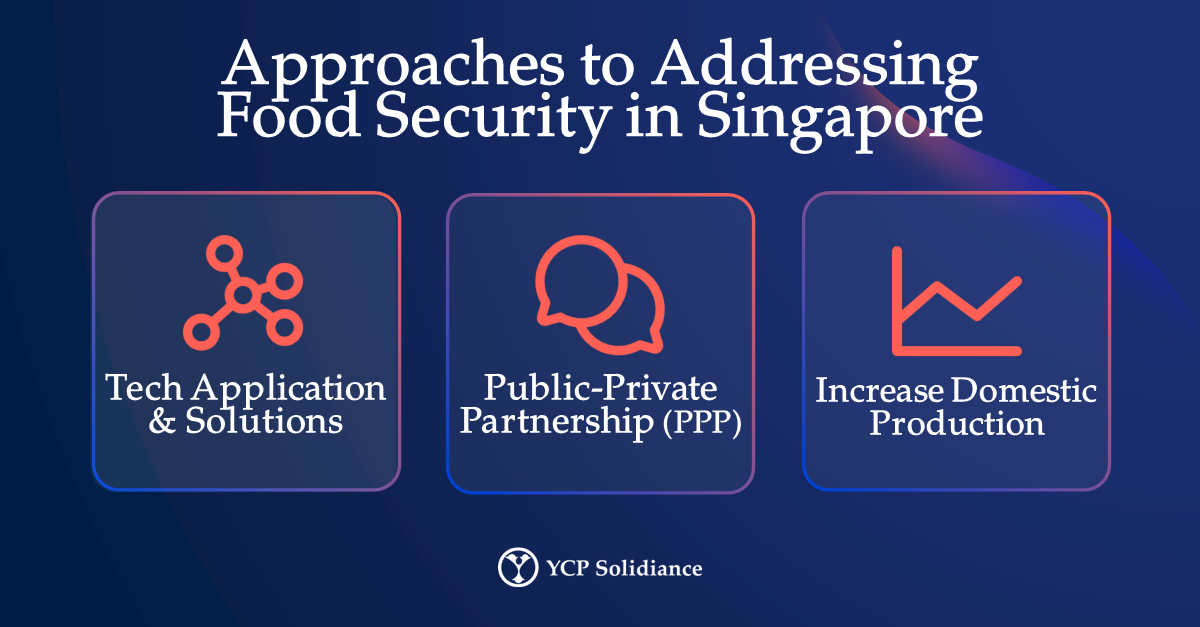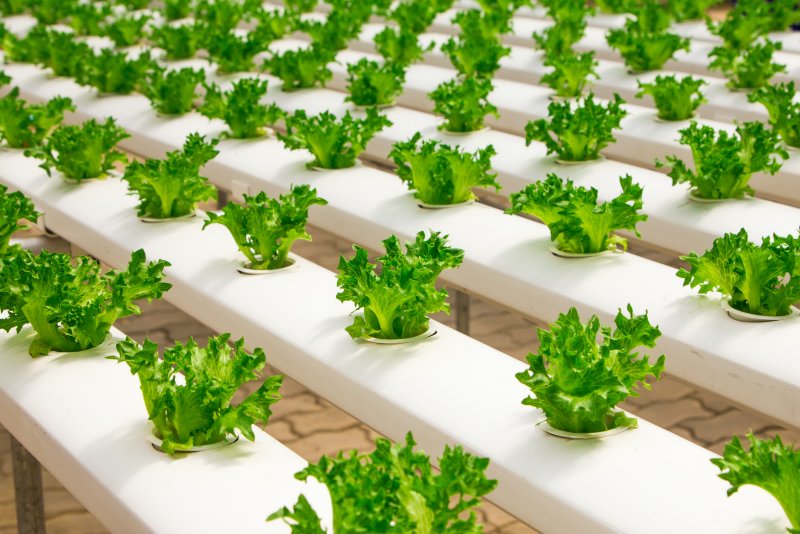The latest data reflects that Singapore has a total land area of approximately 720 square kilometers. By the end of 2022, Singapore’s population is projected to reach 5.82 million. Given Singapore’s growing population and its limited space, urban development and activities that are closely related present a challenging venture.
One such issue that land scarcity further exacerbates is food security. Due to a lack of space for agricultural cultivation, Singapore has been highly limited in its efforts. Thus, the country is turning to technological innovation to address the growing concern.
Goals for Food Security in Singapore
According to a 2021 report on food security conducted by the Singapore Food Agency (SFA), research showed that Singapore relies heavily on importation from other countries as domestic production of food groups like vegetables (4%) and seafood (8%) are relatively low.
Despite the scarcity of domestically produced food and subsequent food security issues, the government has set an ambitious ‘30 by 30’ goal—an overall domestic food production mark of 30% by the year 2030. To achieve this, the same report has outlined a food security strategy that will rely on two main approaches: (1) optimization of space for the agricultural-food industry, and (2) allocation of further funds to increase capacity which can be achieved via technology adoption.
The desire to increase domestic production at an accelerated pace is indicative of a vertical integration approach that strengthens end-to-end capabilities and strengthened control over processes. Throughout the COVID-19 pandemic, companies, and countries alike have adopted this strategy due to the frequent instability and unreliability brought about by general supply chain disruptions. Further exploring vertical integration could potentially boost Singapore’s self-sufficiency in the context of domestic production and the issue of food security.
Use of Partnerships and Tech Solutions
Singapore’s attempts to utilize technology despite limited functional space for agri-food production date to as early as 2012. Sky Greens, a local Singaporean firm, and the Agri-Food and Veterinary Authority of Singapore (AVA) engaged in a collaborative agreement to promote vertical farming.
Through this public-private partnership (PPP), the two entities aimed to popularize eco-friendly vertical farming systems that could be built as standalone properties, or atop structures like housing buildings and commercial spaces. These systems would also utilize sustainable processes such as the use of recycled water for watering and hydro-powered tower rotation with limited electricity reliance.
Considering the ‘30 by 30’ food security goals and previous attempts to apply innovative technological solutions for the sake of increased domestic production, there is an opportunity for new market entrants and potential investors to capitalize on the current situation in Singapore. Specifically, tech companies that are interested in retrofitting their solutions for the agri-food industry stand to strive and benefit the most. Beyond this, interested parties could also look to forge PPP with the Singaporean government as previous agri-food production efforts, like the Sky Greens project, is indicative of the government’s willingness to explore such collaborations.
Overall, the current climate in Singapore reflects that there is an urgency to address the food security issue at hand. Further, both the public and private sectors are more than willing to explore several possible solutions – be it through technology, PPP, or other avenues.
To get insight on other trends and their possible implications on businesses in Singapore, subscribe to our newsletter here and check out these reports:






